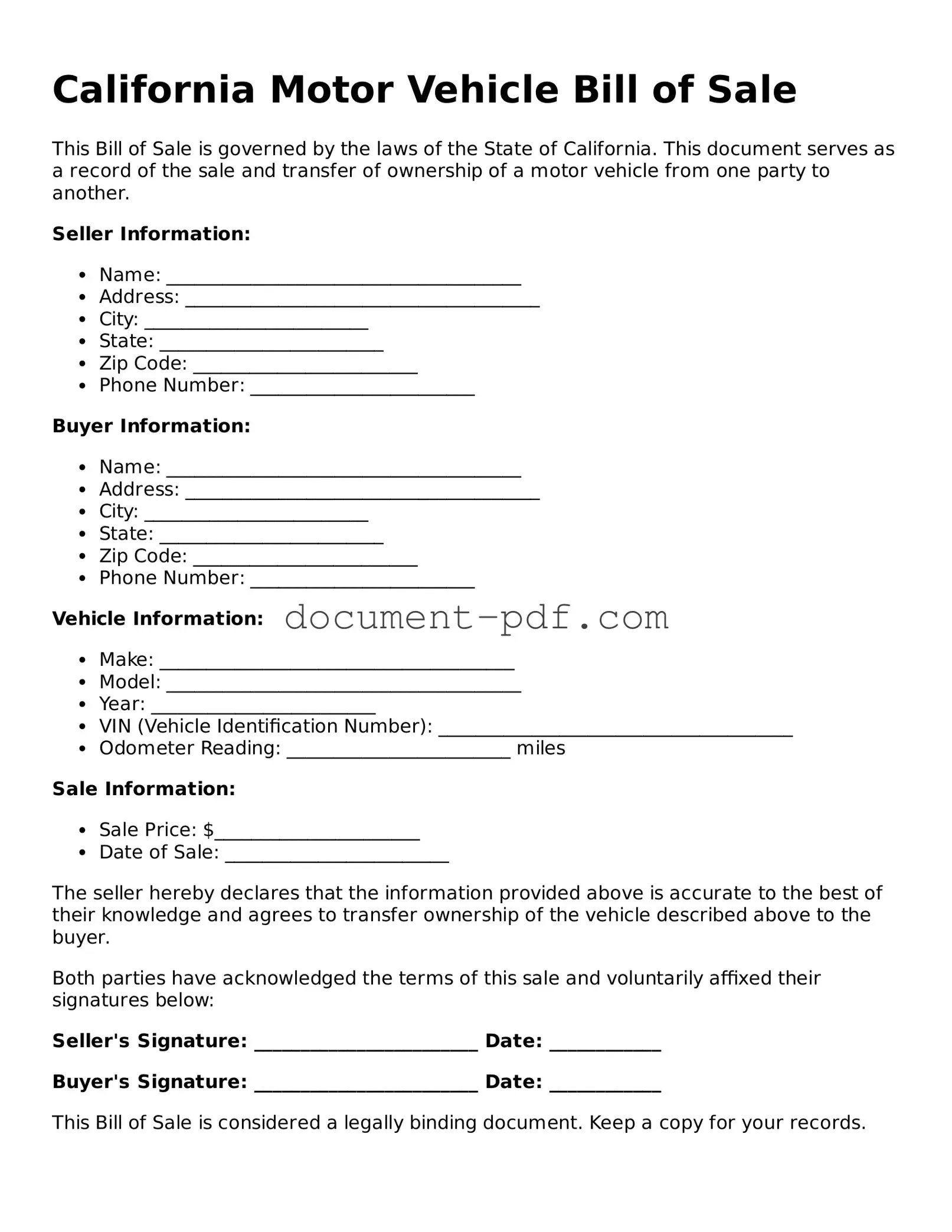The California Motor Vehicle Bill of Sale form shares similarities with the Vehicle Title. Both documents serve as proof of ownership for a vehicle. The title is an official document issued by the state that indicates who legally owns the vehicle. When a vehicle is sold, the title is transferred from the seller to the buyer, much like how a bill of sale documents the transaction. Both documents are crucial for ensuring that the new owner has the right to possess and use the vehicle without disputes.
Another document that resembles the Bill of Sale is the Purchase Agreement. This agreement outlines the terms of the sale, including the price, payment method, and any conditions of the sale. Like the Bill of Sale, the Purchase Agreement is a record of the transaction between the buyer and seller. It can also serve as evidence in case of disputes, ensuring that both parties understand their rights and responsibilities.
The Odometer Disclosure Statement is also similar to the Bill of Sale. This document records the vehicle's mileage at the time of sale, which is important for determining the vehicle's value and condition. Both documents help protect buyers from fraud by ensuring that they receive accurate information about the vehicle. The Odometer Disclosure Statement is often required when transferring ownership, just like the Bill of Sale.
The Release of Liability form is another document that aligns with the Bill of Sale. This form notifies the state that the seller is no longer responsible for the vehicle after the sale. It provides legal protection for the seller, as it confirms that they have transferred ownership. Similarly, the Bill of Sale serves as proof of the transaction, making both documents essential for a smooth transfer of ownership.
For a thorough understanding of vehicle ownership transfer, it's crucial to utilize a strong template. You can find a helpful resource about the Motor Vehicle Bill of Sale template that simplifies the process.
The Vehicle Registration form is similar in that it is necessary for legal ownership and operation of a vehicle. While the Bill of Sale documents the sale, the Vehicle Registration is what allows the vehicle to be driven on public roads. Both documents must be completed and submitted to the appropriate authorities to ensure that the vehicle is legally recognized and that the new owner can operate it without issues.
The Insurance Policy Declaration is another related document. While the Bill of Sale confirms the transaction, the Insurance Policy Declaration provides evidence of coverage for the vehicle. Both documents are essential for the buyer, as they help establish ownership and ensure that the vehicle is protected against potential risks. Having insurance is often a requirement for vehicle registration, linking these documents closely together.
The Loan Agreement can also be compared to the Bill of Sale. If a buyer finances a vehicle, the Loan Agreement outlines the terms of the loan, including the amount borrowed and repayment schedule. While the Bill of Sale confirms the transfer of ownership, the Loan Agreement serves as a record of the financial transaction involved in purchasing the vehicle. Both documents are crucial for protecting the interests of both the buyer and the lender.
Lastly, the Affidavit of Heirship can be likened to the Bill of Sale in cases where a vehicle is inherited. This document establishes the rightful ownership of a vehicle passed down through inheritance. Just as the Bill of Sale provides proof of a transaction, the Affidavit of Heirship serves as legal evidence of ownership transfer due to death. Both documents are vital for ensuring that ownership is clear and undisputed.
